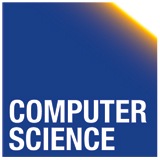Instructor
- Boris Glavic: http://cs.iit.edu/~glavic
- Email: bglavic@iit.edu
- Phone: 312.567.5205
- Office: Stuart Building, room 226C
- Office Hours: Wednesdays, 12:30-1:30pm
- Course Webpage: http://cs.iit.edu/~cs520
- DBGroup Webpage: http://cs.iit.edu/~dbgroup
- Google Group: https://groups.google.com/d/forum/cs520-2018-spring-group
TAs
- Xing Niu
- Email: xniu7@hawk.iit.edu
- Phone: 312 567 7518
- Office: Stuart Building, room SB 012
- Office Hours: Thursday, 1:00pm - 3:00pm
- Su Feng
- Email: sfeng14@hawk.iit.edu
- Phone: 312 567 7518
- Office: Stuart Building, room SB 012
- Office Hours: Mondays, 12:50-1:50pm
Syllabus
syllabus.pdfCourse Overview
1:50pm - 3:05pm, Mondays + Wednesdays, Stuart 104
This course introduces the basic concepts of data integration, data warehousing, and provenance. We will learn how to resolve structural heterogeneity through schema matching and mapping. The course introduces techniques for querying several heterogeneous datasources at once (data integration) and translating data between databases with different data representations (data exchange). Furthermore, we will cover the data-warehouse paradigm including the Extract-Transform-Load (ETL) process, the data cube model and its relational representations (such as snowflake and star schema), and efficient processing of analytical queries. This will be contrasted with Big Data analytics approaches that (besides other differences) significantly reduce the upfront cost of analytics. When feeding data through complex processing pipelines such as data exchange transformations or ETL workflows, it is easy to loose track of the origin of data. In the last part of the course we therefore cover techniques for representing and keeping track of the origin and creation process of data - aka its provenance.
The course is emphasizing practical skills through a series of homework assignments that help students develop a strong background in data integration systems and techniques. At the same time, it also addresses the underlying formalisms. For example, we will discuss the logic based languages used for schema mapping and the dimensional data model as well as their practical application (e.g., developing an ETL workflow with rapid miner and creating a mapping between two example schemata). The literature reviews will familiarize students with data integration and provenance research.
Workload
Prerequisites
- Courses:CS 425 or CS 525
Reading Material
- The following text book is required reading material for the course.
- Doan, Halevy, and Ives. Principles of Data Integration, 1st Edition, Morgan Kaufmann, 2012
- Having an introductory database book at hand will be helpful. Here are some suggestions
- Elmasri and Navathe , Fundamentals of Database Systems, 6th Edition , Addison-Wesley , 2003
- Ramakrishnan and Gehrke , Database Management Systems, 3nd Edition , McGraw-Hill , 2002
- Silberschatz, Korth, and Sudarshan , Database System Concepts, 6th Edition , McGraw Hill , 2010
- Garcia-Molina, Ullman, and Widom, Database Systems: The Complete Book, 2nd Edition, Prentice Hall, 2008
- The slides for the course will be made available on the course schedule page
Grading Policies
- Literature Review: 20%
- Data curation project: 20%
- Midterm Exam: 30%
- Final Exam: 30%
Detailed Course Topics
- Introduction
- Heterogeneity of data
- Uncertainty and incompleteness
- Autonomous and distributed data sources
- Structured vs. unstructured data
- Preprocessing and Cleaning
- Entity resolution
- Data fusion
- Cleaning
- Data Integration
- Mediated schemata and query rewrite
- Schema matching
- Schema mappings
- Data Exchange
- Data exchange transformations
- Universal solutions
- Data Warehousing
- Extract-transform-load (ETL)
- Data cubes
- Star- and snowflake schemas
- Efficient analytics (OLAP) and relationship to transactional relational systems (OLTP)
- Big Data Analytics
- Big Data analytics platforms and programming models
- Differences between Big Data analytics and traditional warehousing approaches
- Big Data integration
- Data Provenance
- Why- and Where-provenance
- Provenance polynomials
- Provenance in data integration
- Provenance for missing answers
Course Objectives
After attending the course students should be able to:
- Understand the problems that arise with querying heterogeneous and autonomous data sources
- Understand the differences and similarities between the data integration/exchange, data warehouse, and Big Data analytics approaches
- Be able to build parts of a small data integration pipeline by "glueing" existing systems with new code
- Have learned formal languages for expressing schema mappings
- Understand the difference between virtual and materialized integration (data integration vs. data exchange)
- Understand the concept of data provenance and know how to compute provenance


